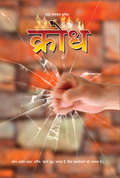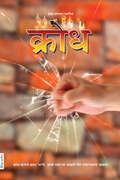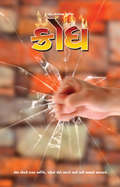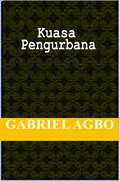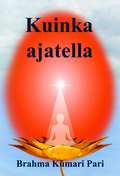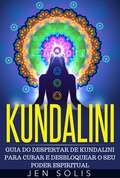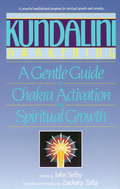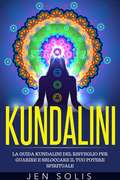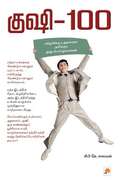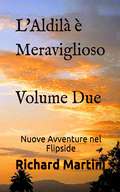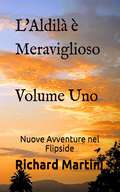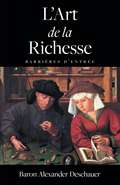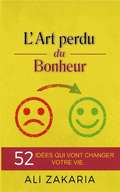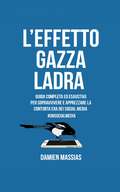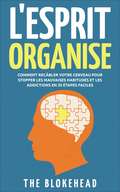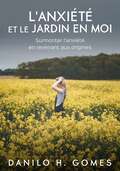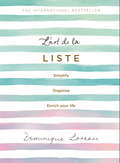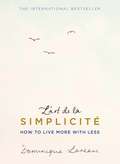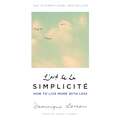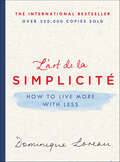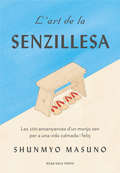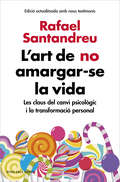- Table View
- List View
Krodh: क्रोध
by Dada Bhagwanहमें क्रोध क्यों आता है? क्रोध आने के कुछ कारण यह है - जब कोई भी कार्य हमारी इच्छानुसार नहीं होता या हमें यह लगे कि सामनेवाला व्यक्ति हमारी बात नहीं समझ रहा या फिर किसी बात पर किसी के साथ मनमुटाव हो तब| लेकिन क्रोध आने का कोई भी निश्चित कारण नहीं होता| कई बार हमारी समझ से हमें यह लगता है कि, हम जो भी सोच रहे है या जो कुछ भी कर रहे है वह सब सही ही है| पर, उस वक्त यदि कोई दूसरा व्यक्ति आकार हमें गलत साबित करे तो हम अपना आपा खो बैठते है और उसपर अत्यंत क्रोधित हो जाते है| क्रोध करने से ना सिर्फ सामनेवाला व्यक्ति दुखी होता है पर हमें भी उतना ही दुःख होता है| कई किस्सों में यह देखा गया है कि जिससे हम सबसे अधिक प्यार करते है, उसपर ही सबसे ज्यादा गुस्सा भी करते हैं| इस तरह बिना सोचा समझे गुस्सा करने से कई बार हमारे संबंधो में भी काफी तनाव पैदा हो जाता है जिसका फल अच्छा नहीं होता| किस प्रकार हम अपने क्रोध पर काबू पा सकते है या किसी और क्रोधित व्यक्ति के साथ कैसा बर्ताव करे ताकि हमारे औरों से प्रेमपूर्वक सम्बन्ध बने रहे, इन प्रश्नों का हल पाने के लिए आगे पढ़े|
Krodh: क्रोध
by Dada Bhagwanहमें क्रोध क्यों आता है? क्रोध आने के कुछ कारण यह है - जब कोई भी कार्य हमारी इच्छानुसार नहीं होता या हमें यह लगे कि सामनेवाला व्यक्ति हमारी बात नहीं समझ रहा या फिर किसी बात पर किसी के साथ मनमुटाव हो तब| लेकिन क्रोध आने का कोई भी निश्चित कारण नहीं होता| कई बार हमारी समझ से हमें यह लगता है कि, हम जो भी सोच रहे है या जो कुछ भी कर रहे है वह सब सही ही है| पर, उस वक्त यदि कोई दूसरा व्यक्ति आकार हमें गलत साबित करे तो हम अपना आपा खो बैठते है और उसपर अत्यंत क्रोधित हो जाते है| क्रोध करने से ना सिर्फ सामनेवाला व्यक्ति दुखी होता है पर हमें भी उतना ही दुःख होता है| कई किस्सों में यह देखा गया है कि जिससे हम सबसे अधिक प्यार करते है, उसपर ही सबसे ज्यादा गुस्सा भी करते हैं| इस तरह बिना सोचा समझे गुस्सा करने से कई बार हमारे संबंधो में भी काफी तनाव पैदा हो जाता है जिसका फल अच्छा नहीं होता| किस प्रकार हम अपने क्रोध पर काबू पा सकते है या किसी और क्रोधित व्यक्ति के साथ कैसा बर्ताव करे ताकि हमारे औरों से प्रेमपूर्वक सम्बन्ध बने रहे, इन प्रश्नों का हल पाने के लिए आगे पढ़े|
Krodh: ક્રોધ
by Dada Bhagwanજયારે પોતાના ધાર્યા પ્રમાણે નથી થતું, અથવા જયારે સામી વ્યક્તિ પોતાને સમજતી નથી, અથવા જયારે દ્રષ્ટિકોણમાં ફરક હોય ત્યારે મોટાભાગે પોતાને ક્રોધ આવે છે. ઘણીવાર આપણને ખોટા માનવામાં આવે છે, જયારે આપણે પોતે સાચા છીએ એમ માનતા હોઈએ ત્યારે આપણને ક્રોધ આવે છે. આપણી પોતાની સમજણના આધારે આપણે પોતાને સાચા માનતા હોઈએ છીએ જયારે સામી વ્યક્તિ માને છે કે તે સાચી છે. મોટાભાગે જયારે આપણને સમજ નથી પડતી કે આગળ શું કરવું, આપણી પાસે દૂરદ્રષ્ટિ કે સૂઝ નથી હોતી ત્યારે આપણે ક્રોધિત થઈએ છીએ. જે લોકો આપણને સૌથી વધારે પ્રેમ કરે છે તેમની સાથેના સંબંધો ને જ આપણે નુકશાન પહોંચાડીએ છીએ. આપણે આપણા સંતાનોને બધા જ સુખચેન, સાથ, સલામતી આપવા માંગીએ છીએ પરંતુ આપણા ક્રોધથી સંતાનો પોતાના જ ઘરમાં ભયભીત રહે છે. ક્રોધિત લોકો સાથે કેમ વર્તવું? જયારે કોઈ યંત્ર બહુ ગરમ થઇ જાય, ત્યારે આપણે તેને થોડા સમય માટે એમજ છોડી દેવું જોઈએ તો તે ટુંક સમયમાં ઠંડું થઇ જશે. પરંતુ જો તમે તેને છેડતા રહેશો તો તમે દાઝશો. તમારા સંબધો અને ક્રોધની સમસ્યાના ઉકેલ માટે આગળ વાંચો.
Kuasa Pengurbanan
by Gabriel AgboPengurbanan itu hebat. Sangat hebat! Orang paling kaya, orang paling kuat, pria dan wanita yang paling diberkati, orang paling bijaksana, raja paling besar, dan nabi yang paling hebat semuanya adalah pria serta wanita yang berkurban. Mereka merelakan segalanya, mempertaruhkan segalanya demi bangsa mereka, kemanusiaan, dan demi Tuhan untuk mencapai tujuan serta prestasi mereka yang akan dibanggakan bahkan dalam keabadian. Anda ingin tahu rahasia mereka? Bagus. Jika ingin menjadi hebat, Anda harus menjadi pria/wanita yang berkurban terlebih dulu. Tidak ada yang mustahil bagi mereka yang mampu membayar harga. Anda akan mendapati bab-bab yang sangat mencerahkan – Kuasa Pengurbanan, Kurbankan Satu-satunya Milikmu, Aku Akan Melewati Mesir, Aku Akan Membayar Harga, Ikuti Aku! Kami Datang Mencarimu, Aku Akan Memeliharamu, Siapkan Makanan Terakhir Itu, Kuasa Untuk Menyelamatkan, Pujian, Doa, dan Puasa. Di sini, kita akan mempelajari tentang pengurbanan iman, kebaikan, patriotisme, doa, puasa, dan pujian. Ketika Anda melakukan hal-hal di atas dengan luar biasa, Anda segera membangkitkan kekuatan ilahi, yang tidak terlihat, dan supernatural yang akan merespons serta memenuhi Anda. Buku ini harus dibaca.
Kuinka ajatella
by Brahma Kumari PariTämä kirja "Kuinka ajatella" antaa selkeän, tiiviin ja merkityksellisen selityksen niihin Murleihin, jotka ovat Jumalan (Korkeimman Sielun) antamia viestejä Brahma Kumarisissa. Tämä kirjaa antaa neuvoja siihen, kuinka sinun (sielun) tulisi kirnuta ja omaksua Korkeimman Sielun tietoa. Tämä tuo elämääsi myönteisen muutoksen, sillä paljastaa elämän syviä mysteerejä ja antaa sinulle tavan omaksua pyhän luonteen; pystyt käyttämään pyhiä hyveitä ja arvoja kaikenlaisiin tilanteisiin elämässäsi. Tämän kirjan sisältö auttaa sinua laittamaan siemenen mieleesi, joka tuo sinut puhtaalle ja enkeliselle tasolle. Käyttämällä tässä kirjassa ehdotettua ajattelutapaa sinusta (sielusta) tulee kuin hohtava timantti kultakorussa, joka näyttää kaiken loistonsa ja arvonsa. Tätä kirjaa ”Kuinka ajatella” ovat editoineet ja parannelleet “Shiv Baba Service Initiative” -tiimin jäsenet, jotka ovat omistautuneet tekemään jumalallista työtä. Se BK, joka johtaa “Shiv Baba Service Initiative” -tiimiä, BK:n Google-hakuja ja Brahma Kumarisin virallisia verkkosivuja, pyysi Brahma Kumari Paria kirjoittamaan tämän kirjan, sillä Jumala (Shiv Baba) on sanonut, että tämä kirja tulisi kirjoittaa. Niinpä Brahma Kumari Pari kirjoitti tämän kirjan. Nykyhetki on kaikkein tärkein aika koko maailmankierron näytelmässä. Ohjatkoon tämä kirja sinua kohti ihmiselämän korkeinta ja tärkeintä tarkoitusta.
Kundalini - Guia do Despertar de Kundalini para Curar e Desbloquear o Seu Poder Espiritual
by John Wald Renata GomesEste livro é um guia para despertar a energia de Kundalini e desbloquear o seu poder espiritual e de cura. Pretende apresentar o que é a energia de Kundalini, a sua história e inclui sugestões para iniciar a sua prática. A sua leitura irá ajudá-lo a compreender a conexão do corpo ao espírito e a aprofundar os conceitos de despertar espiritual. É abordada a cura do corpo e como a prática de Kundalini torna efectiva esta habilidade natural. Ficará ainda consciente dos potenciais perigos associados à prática de Kundalini, mas também ficará conhecedor de outras práticas mais positivas compatíveis com a Kundalini. No final da sua leitura terá não só uma visão geral desta prática, mas estará também munido de todos os detalhes importantes para começar a sua aventura. Aproveite a viagem!
Kundalini Awakening
by John SelbyKundalini Awakeningdelivers a universe of easy benefits for readers seeking to find relaxation, harmony, and inner peace. Kundalini Awakeningdemystifies the complex science of Kundalini in a compelling content of: · A full understanding of the seven Chakras, from the first Root Chakra located at the base of the spine to the brain's Crown Chakra · The power of mantras and complete instructions for their use · Breathing techniques for relaxation and stress reduction · Meditation exercises using the guided imagery and the magnificent full color Chakra paintings of Zachary Selig that clarify the color coding of the Chakras Kundalini Awakeningpresents a dynamic humanization solution through Chakra models framed in meditations to address the challenges in our world and the way we interact with ourselves.
Kundalini: La Guida Kundalini del Risveglio per Guarire e Sbloccare il Tuo Potere Spirituale
by John WaldSblocca Oggi il Tuo Potere Spirituale Stai cercando una pratica che renda più efficace la capacità naturale del corpo di guarirsi da solo? Vuoi imparare le possibilità del potere spirituale? Vuoi potenziare il tuo corpo, la tua mente ed il tuo spirito? Questo libro vuole fornire la capacità di capire cosa è la pratica Kundalini, con una breve storia ed altre informazioni del posso che ti aiuteranno ad avere un contesto più completo. In questo libro ci sono anche suggerimenti su come iniziare la tua pratica Kundalini per curare e potenziare il tuo corpo, la tua mente ed il tuo spirito. Tra le pagine di questo libro, troverai le risposte a queste e ad altre domande. Solo alcune delle domande e degli argomenti trattati comprendono: La Connessione dello Spirito al Corpo Il Tesoro Nascosto Le Scure Nebbie della Preistoria Il Bhagavad Gita Yoga Kundalini Risveglio Guarigione Potere Spirituale Il Significato dell'Egoismo Pericoli Potenziali dei Poteri Spirituali Benefici Spirituali Chakra, Nadi e Corpo Sottile Ed altro! Anche se le centinaia di dettagli della pratica Kundalini vanno oltre questo libro, questo capitolo ti forniranno un'ampia conoscenza di ciò che viene coinvolto nel risveglio dell'energia Kundalini. Quando avrai finito di leggere, avrai una chiara idea delle sfide e dei benefici del risveglio Kundalini. Prendi oggi la tua copia del Kundalini!
Kurukshetra April 2022
by Publications DivisionThe April 2022 edition of Kurukshetra magazine is based on Empowering rural women.
Kurukshetra June 2022: कुरुक्षेत्र जून 2022
by Publications Divisionकुरुक्षेत्र जून 2022 पत्रिका का संस्करण ग्रामीण विकास पर केंद्रित है। पत्रिका में प्रमुख बिंदु ग्रामीण पर्यटन, भारत में सांस्कृतिक पर्यटन का विकास हैं। पत्रिका भारत के विभिन्न हिस्सों में पर्यटकों के आकर्षण पर प्रकाश डालती है।
Kurukshetra May 2022
by Publications DivisionKurukshetra English May 2022 special monthly magazine is dedicated to rural development.
Kushi-100
by Sibi K SolomonThis books offers, with supporting anecdotes, 100 ideas for everyone who wants to lead a happy life.
L'Aldilà è Meraviglioso: Nuove Avventure nel Flipside (Volume #2)
by Richard Martini Roberto Felletti“L'Aldilà è Meraviglioso: Nuove Avventure nel Flipside” compie un salto nell'aldilà, comprendendo interviste con scienziati che discutono dell'origine della consapevolezza confrontandola con le esperienze di pre-morte (NDE) e con le sedute di ipnosi regressiva volte a esplorare la vita tra le vite (LBL), comprendendo anche interviste con persone che affermano di parlare dall'aldilà. Vengono presentate nuove sedute LBL con sorprendenti testimonianze di contatti con l'aldilà, con persone che sostengono di avere sperimentato Dio e di avere compreso il viaggio che intraprendiamo con la nostra vita. Il Volume Uno comprende una prefazione di Charles Grodin, interviste con scienziati che studiano l'origine della coscienza, che non risulterebbe essere il cervello: Mario Beauregard (“Brain Wars”), il Dott. Bruce Greyson (il padre della ricerca sulle NDE), la ricerca della Dott.ssa Helen Wambach, parallela a quella del Dott. Michael Newton (“Journey of Souls”). Comprende, inoltre, interviste con persone che hanno sperimentato esperienze di pre-morte: David Bennett (“Voyage of Purpose”), Jeremy Kagan, il Dott. Rajiv Parti e Jeffry Martini. È stato intervistato Scott De Tamble, ipnoterapeuta di formazione Michael Newton, il quale confronta le testimonianze del Dott. Eben Alexander (“Proof of Heaven”) e di Colton Burpo (“Heaven is for Real”). Il Volume Due comprende interviste con Gary Schwartz, PhD, (“Sacred Promise”), il Cappellano Savarna Wiley e Peter Smith, Presidente del Michael Newton Institute, oltre a varie testimonianze di persone che hanno contatti diretti dall'aldilà con altre persone che non sono più sul pianeta. Inoltre, ci sono alcune trascrizioni di sedute LBL, tra cui quelle che analizzano esperienze pregresse di pre-morte. L'autore espl
L'Aldilà è Meraviglioso: Nuove Avventure nel Flipside (volume #1)
by Richard Martini Roberto FellettiL'autore del best-seller “Flipside” (due volte al primo posto nella classifica di genere di Amazon) con “L'Aldilà È Meraviglioso: Nuove Avventure nel Flipside” ci accompagna nell'aldilà e, anche per mezzo di interviste con alcuni scienziati, cerca di spiegare l'origine della coscienza, confronta le esperienze di pre-morte (NDE) con le sedute di ipnosi regressiva sulla vita tra le vite (LBL), riporta interviste fatte a persone che sostengono di parlare dall'aldilà. In questo libro, ci sono nuove sedute di ipnosi LBL con sorprendenti testimonianze di contatti con l'aldilà, che sperimentano la presenza di Dio e che cercano di comprendere quel viaggio che è la vita. Il Volume Uno comprende: una prefazione di Charles Grodin, interviste con scienziati che hanno studiato l'esistenza della coscienza al di fuori del cervello, tra cui il neuroscienziato Mario Beauregard (“Brain Wars”) e il Dott. Bruce Greyson (padre della ricerca sulle NDE) e la ricerca della Dott.ssa Helen Wambach, parallela a quella del Dott. Michael Newton (“Journey of Souls”). Inoltre, il libro comprende interviste con persone che hanno vissuto esperienze di pre-morte, tra cui David Bennett (“Voyage of Purpose”), Jeremy Kagan, il Dott. Rajiv Parti e Jeffry Martini. Ancora, il libro racchiude un'intervista con l'ipnoterapeuta, di formazione Michael Newton, Scott De Tamble, confronta le testimonianze del Dott. Eben Alexander (“Proof of Heaven”) e di Colton Burpo (“Heaven is for Real”). L'autore, in questa ricerca, esamina il suo stesso incredibile viaggio, includendo una sua seduta di ipnosi regressiva LBL. Nel libro sono anche riportate trascrizioni di sedute LBL di soggetti molto particolari che hanno ricordi dettagliati non solo delle loro vite precedenti, ma anche del mondo tra le vite, dove sostengono di avere scelto la loro vita attuale. Frutto di una ricerca approfondita, affascinante da lasciare senza fiato, “L'Aldilà È Meraviglioso: Nuove Avven
L'Art de la richesse
by Baron Alexander Deschauer Rita BakopDevenir riche, et mieux encore, opulent, demande un certain état d'esprit. Devenir opulent est plutôt simple, en théorie. En pratique, il existe des obstacles que la plupart d'entre nous ne voient même pas. Ce sont des barrières d'entrée qui permettent à beaucoup de personnes dans la société de prétendre que des opportunités existent pour tout le monde – mais en réalité, elles sont fermées pour la plupart d'entre nous. La première chose à faire pour surmonter ces barrières c'est d'être capable d'apprendre à les voir. Une fois que vous apprenez à les voir, vous serez capable de les surmonter. Ce livre, à travers de petits récits, expose le secret du développement de l'état d'esprit à cultiver pour devenir riche. Il vous servira des vérités testées derrières l'accumulation de la richesse et de l'opulence.
L'Art perdu du bonheur: 52 idées qui vont changer votre vie
by Ali ZakariaVous réveillez-vous insatisfait tous les matins ? Vous pensiez que la réussite financière était la voie du bonheur, mais ce n’est pas le cas. Ali Zakaria exerce le métier de juge au Caire, en Égypte, et a été témoin de litiges quotidiens dans la salle d’audience, il a ainsi constaté que le succès et la victoire n’apportent pas toujours le bonheur. Divorce, vol, assassinat, il a tout vu. Il a passé cinq ans et des centaines d’affaires judiciaires à essayer de répondre à ces questions sur le bonheur, que ce soit pour lui-même ou pour les autres : 1. Est-ce que plus d’argent nous rend toujours plus heureux ? Si non, pourquoi ? 2. Gagner améliore-t-il toujours la vie ? Si non, pourquoi ? 3. La vengeance guérit-elle les blessures ? Dans cet ouvrage, Ali Zakaria propose une approche unique du bonheur grâce à son expérience d’écoute et de résolution des litiges. - L’état d’esprit du vrai bonheur : l’état d’esprit à avoir dès le réveil - Les actions qui nous donnent le sourire : quelles sont les activités qui peuvent vous rendre heureux sur une base quotidienne, hebdomadaire, mensuelle et annuelle. - Le régime du bonheur : aliments et boissons magiques pour booster votre humeur. - Les relations heureuses : comment développer des relations qui améliorent vos journées, plutôt que de vivre des expériences amères. - Libérez vos hormones du bonheur, ne vous laissez pas avoir par une nouvelle arnaque au bonheur : plus d’argent, plus de succès, plus de pouvoir. Apprenez à construire un mode de vie qui apporte un bonheur réel et durable. Si vous ne voulez pas que votre vie devienne une affaire au tribunal, cliquez sur « acheter maintenant » et apprenez de l’expérience d’Ali.
L'Effetto Gazza Ladra: Guida completa ed esaustiva per sopravvivere e apprezzare la contorta era dei social media.
by Damien MassiasAttenzione, nuova notifica! Potresti essere invischiato in una perdita di tempo ed energie dovuta a una battaglia quotidiana impossibile da vincere. Prove sempre più evidenti mostrano che la maggior parte di noi insegue inconsciamente la propria realizzazione (fiducia in sé stessi, conferme, legami, obiettivi e quant’altro) in un luogo in cui ironicamente non la troverà mai: i social media. Beffa ancora più grande? Dipendiamo sempre più da suddetto inseguimento e la nostra cultura ci rende ciechi nei confronti di quanto sia dannosa tale futile ricerca. Se usati in modo sano, i media possono migliorarci la vita in un’infinità di modi positivi. Tuttavia, la maggior parte di noi abusa di essi inconsapevolmente e in maniera malsana, rendendoli vantaggiosi quanto lo può essere un virus. E la malattia più pericolosa è proprio quella che ti convince di non essere affatto ammalato... Perciò, mentre molti credono che non esistano neppure dei problemi di cui discutere, Damien Massias sta già ingegnandosi per una cura. Primo ingrediente: la consapevolezza. Massias è un life coach e un osservatore professionista. Ti parlerà in modo diretto, senza indorarti la pillola, ma sempre con tanta genuina gentilezza. Il presente libro è un guida per navigare (e schivare) i pericoli dei social media, in modo da poter continuare a utilizzarli in modo sano. Funge da campanello d'allarme per osservare, esaminare e rivalutare la nostra relazione coi social e ricalibrare la bussola verso la vera realizzazione. Il manuale esamina reali casi di studio al fine di illustrare come una cosa che riteniamo piccola e innocua possa avere un effetto colossale sulle nostre vite: l’Effetto Gazza Ladra.
L'Esprit Organisé: Comment recâbler votre cerveau pour stopper les mauvaises habitudes et les addictions en 30 étapes faciles
by The BlokeheadJe souhaite vous remercier pour votre intérêt pour ce livre "L'Esprit organisé : « Comment recâbler votre cerveau pour stopper les mauvaises habitudes et les addictions en 30 étapes faciles ». Ce livre contient des étapes et des stratégies éprouvées, sur la façon d'organiser votre esprit, pour vous aider à surmonter les mauvaises habitudes dans votre vie. Il vous aidera à comprendre comment votre esprit fonctionne. Il vous donnera les étapes simples qui vous permettront de combattre les mauvaises habitudes et les addictions qui vous empêchent de vivre votre vie pleinement. Il vous fournira les connaissances nécessaires pour réussir à organiser et à revitaliser votre esprit.
L'anxiété et le jardin en moi: Surmonter l'anxiété en revenant aux origines
by Danilo H. GomesSi vous souffrez encore d'anxiété, c'est que vous n'avez pas encore compris comment fonctionne votre jardin de l'âme. Il existe un monstre apparemment invincible qui, en ce moment même, tourmente la vie d'innombrables personnes dans le monde entier. Ce monstre appelé anxiété a dévasté les âmes comme un ouragan qui détruit tout ce qu'il touche. Connaissant le Jardinier Parfait et le jardin de l'âme, nous voyons une lumière au bout du tunnel pour les anxieux. « L'anxiété et le jardin en moi » est un ouvrage chrétien qui favorise avant tout la connaissance philosophique de soi tout en développant la foi dans le Créateur. Un livre court mais profond. Surmontez l'anxiété tout en apprenant à mieux connaître votre jardin intérieur.
L'art de la Liste: Simplify, organise and enrich your life
by Dominique Loreau'Perfect for fans of Marie Kondo' Publishers WeeklyDISCOVER THE LIFE-CHANGING MAGIC OF LISTS IN THIS INTERNATIONAL BESTSELLERThe humble list has the power to change your life. In its immediacy, its simplicity and its concise, contained form, the list enables us to organise, to save time and to approach facts with clarity. Yet why do we end up with interminable To Do Lists that are never completed?After decades living in Japan, Dominique Loreau has become a master in the art of de-cluttering and simplifying. Now, in L'art de la Liste - a huge bestseller in her native France and translated into English for the first time - she turns her attentions to better list-making, showing you how to organise them and use them intelligently. Taking you on a step-by-step journey to greater productivity, this practical, inspiring book influences every aspect of your life - from home, diet and beauty to mental health and self-awareness.To perfect the art of the list is to live simpler, richer and more organised lives.
L'art de la Simplicité (The English Edition): How to Live More With Less
by Dominique LoreauIf simplicity is an art, then Dominique Loreau is a master. Having lived in Japan for many years and inspired by oriental philosophy, Dominique Loreau discovered the beauty of a life well lived through the art of simplicity. Her lifestyle rests on the principle of 'less is more', and imbues all areas of existence, from the material to the spiritual. She captured her philosophy in the ground-breaking L'art de la Simplicité, which was an massive bestseller in her native France and is now available in the English language for the first time. Simplify your home, empty your wardrobe, abandon compulsive purchases, eat more frugally but better, take care of your body and mind. From the art of feeling well in your home to the art of feeling well in your body, this compelling and elegant book will transform your life and take you on an empowering journey to happiness. You will feel energised, more confident and free. You will discover the essence of being truly alive and how to live a more centred life. One full of real pleasure, clarity and satisfaction.
L'art de la Simplicité (The English Edition): How to Live More With Less
by Dominique LoreauIf simplicity is an art, then Dominique Loreau is a master. Having lived in Japan for many years and inspired by oriental philosophy, Dominique Loreau discovered the beauty of a life well lived through the art of simplicity. Her lifestyle rests on the principle of 'less is more', and imbues all areas of existence, from the material to the spiritual. She captured her philosophy in the ground-breaking L'art de la Simplicité, which was an massive bestseller in her native France and is now available in the English language for the first time. Simplify your home, empty your wardrobe, abandon compulsive purchases, eat more frugally but better, take care of your body and mind. From the art of feeling well in your home to the art of feeling well in your body, this compelling and elegant book will transform your life and take you on an empowering journey to happiness. You will feel energised, more confident and free. You will discover the essence of being truly alive and how to live a more centred life. One full of real pleasure, clarity and satisfaction.(p) 2016 Orion Publishing Group
L'art de la Simplicité: How to Live More with Less
by Dominique LoreauDiscover the magic of simplicity in this international bestseller, available for the first time in English.Dominque Loreau is the master in the art of de-cluttering and simplifying. Now her groundbreaking L’art de la Simplicité, a huge bestseller in her native France, is translated into English for the first time. Loreau’s principle of “less is more” is set to change your life forever.Living in Japan and inspired by Asian philosophy, Loreau takes you on a step-by-step journey to a clutter-free home, a calm mind and an energized body. Free yourself of possessions you don’t want or need; have more money to spend on life’s little luxuries; eat better and lose weight; and say goodbye to anxiety and negative relationships.Give yourself the gift of health and happiness; to live fully and freely is to live with L’art de la Simplicité.
L'art de la senzillesa: Les 100 ensenyances d'un monjo Zen per a una vida calmada i feliç
by Shunmyo MasunoShunmyo Masuno fa per al desordre mental el mateix que Marie Kondo ha fet per al desordre domèstic -Publishers Weekly Mitjançant 100 lliçons clares, accessibles i fàcils de posar en pràctica, aquest famós monjo budista recorre a segles de saviesa per acostar el zen a la teva vida. Descobreix com: - alinear les sabates quan te les treguis pot portar ordre a la teva ment - unir les mans en posició gassho pot alleujar l'enuig i evitar el conflicte - abaixar la forquilla als àpats, després de cada mossegada, pot fer que et sentis més agraït pel que tens - la comprensió del concepte d'ichi-go i ichi-e pot ajudar-te a assolir una comunicació més efectiva - plantar una flor i veure-la créixer pot ensenyar-te a acceptar el canvi - gaudir d'una posta de sol pot fer que cada dia sigui especial Amb les pràctiques diàries aprendràs a trobar la felicitat sense buscar experiències extraordinàries sinó fent petits canvis en la teva vida, obrint-te a sentir més pau i calma interior. Relaxa't i troba la felicitat enmig d'aquest món modern i caòtic, simplifica la teva vida amb la saviesa mil·lenària zen. Shunmyo Masuno és el sacerdot principal d'un temple budista zen del Japó, de més de 450 anys d'antiguitat. És també un guardonat dissenyador de jardins zen que treballa per a clients arreu del món, i exerceix de professor de disseny ambiental en una de les principals escoles d'art japoneses. Ha impartit moltes conferències en diferents fòrums, com ara l'Escola de Disseny de Harvard, la Universitat de Cornell o la Universitat de Brown.
L'art de no amargar-se la vida (edició ampliada i actualitzada): Les claus del canvi psicològic i la transformació personal
by Rafael SantandreuAquesta edició actualitzada per Rafael Santandreu conté un nou pròleg i incorpora cinc testimonis de canvi d'expacients de l'autor, que ratifiquen l'eficàcia i l'èxit de L'art de no amargar-se la vida i del mètode en què està basat. El nostre destí és arribar a ser més forts i feliços. I Rafael Santandreu ens proporciona, en aquest llibre, un mètode pràctic, accessible i demostrat científicament per aconseguir-ho. Amb un estil propi, en combinació amb la seva llarga experiència com a psicòleg i amb vivències personals, l'autor mostra com podem transformar la nostra manera de pensar i actuar per tal d'aconseguir ser persones serenes, alegres i optimistes. Emprant les eines de la psicologia cognitiva, l'escola terapèutica més reconeguda del món, L'art de no amargar-se la vida s'ha convertit en un llibre de referència imprescindible, que ha ajudat centenars de milers de persones a ser més felices. Ressenya:«Un llibre molt ben escrit, científicament sòlid i útil per a aconseguir tenir una vida més gratificant i feliç. El recomano.»Walter Riso
